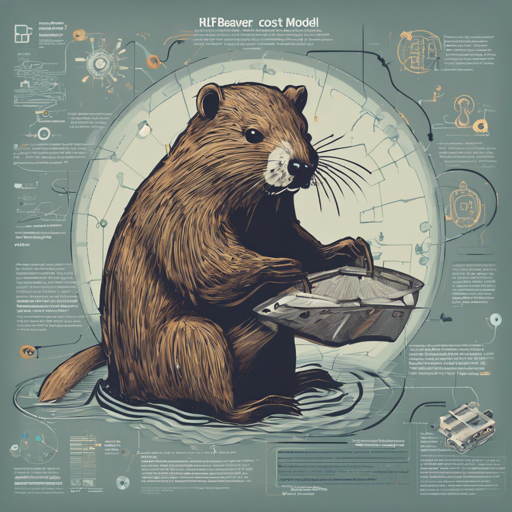In the world of artificial intelligence, ensuring safety and reliability in reinforcement learning from human feedback (RLHF) is paramount. Enter the Beaver cost model, a powerful tool designed to enhance the safety of AI systems. In this article, we’ll explore how to effectively use the Beaver cost model developed by the PKU-Alignment Team and troubleshoot common issues you might encounter.
Understanding the Beaver Cost Model
The Beaver cost model is like a safety net for AI, particularly in the context of RLHF. Imagine a safety instructor guiding a team of climbers; the instructor ensures that every step taken is secure and well-planned. In the same vein, this model helps your AI systems make safer decisions by penalizing harmful actions, all while being tuned on sophisticated datasets.
Key Features of the Beaver Cost Model
- Developed by: The PKU-Alignment Team
- Model Type: An auto-regressive language model based on transformer architecture
- License: Non-commercial
- Fine-tuned From: LLaMA and Alpaca models
How to Use the Cost Model
Utilizing the Beaver cost model requires a few steps in Python. Below is a recipe to get you started:
python
import torch
from transformers import AutoTokenizer
from safe_rlhf.models import AutoModelForScore
# Load the pre-trained model and tokenizer
model = AutoModelForScore.from_pretrained('PKU-Alignment/beaver-7b-unified-cost', torch_dtype=torch.bfloat16, device_map='auto')
tokenizer = AutoTokenizer.from_pretrained('PKU-Alignment/beaver-7b-unified-cost')
# Prepare input for the model
input = "BEGINNING OF CONVERSATION: USER: hello ASSISTANT: Hello! How can I help you today?"
input_ids = tokenizer(input, return_tensors='pt')
# Generate output from the model
output = model(**input_ids)
# Print the output
print(output)
Let’s break down the above code with a simple analogy:
Think of your AI model as a chef in a kitchen. To prepare a dish (generate output), the chef needs ingredients (input). The model is pre-trained, which is like the chef having experience in making different dishes. When the chef (model) gets the recipe (code), they gather the necessary ingredients (input) and start cooking (generate output). After some time, we serve the dish (print output) for our customers (users) to enjoy.
Troubleshooting Common Issues
As with any technical endeavor, you may run into some bumps along the way. Here are some troubleshooting tips:
- Issue: Model not loading correctly
- Solution: Ensure you have the latest version of the transformers library and have installed the model correctly.
- Issue: Input errors
- Solution: Double-check the formatting of your input string, ensuring it matches the expected format.
- Issue: Out of memory errors
- Solution: Try reducing the batch size or optimizing the model loading process.
- Issue: Unexpected output values
- Solution: Revisit your pre-processing steps to ensure that inputs are correctly transformed into tensors.
For more insights, updates, or to collaborate on AI development projects, stay connected with fxis.ai.
Conclusion
By following the outlined steps and understanding the intricacies of the Beaver cost model, you can leverage its capabilities to enhance the safety of your AI applications. Remember, the road to robust AI systems is paved with careful planning and execution.
At fxis.ai, we believe that such advancements are crucial for the future of AI, as they enable more comprehensive and effective solutions. Our team is continually exploring new methodologies to push the envelope in artificial intelligence, ensuring that our clients benefit from the latest technological innovations.

